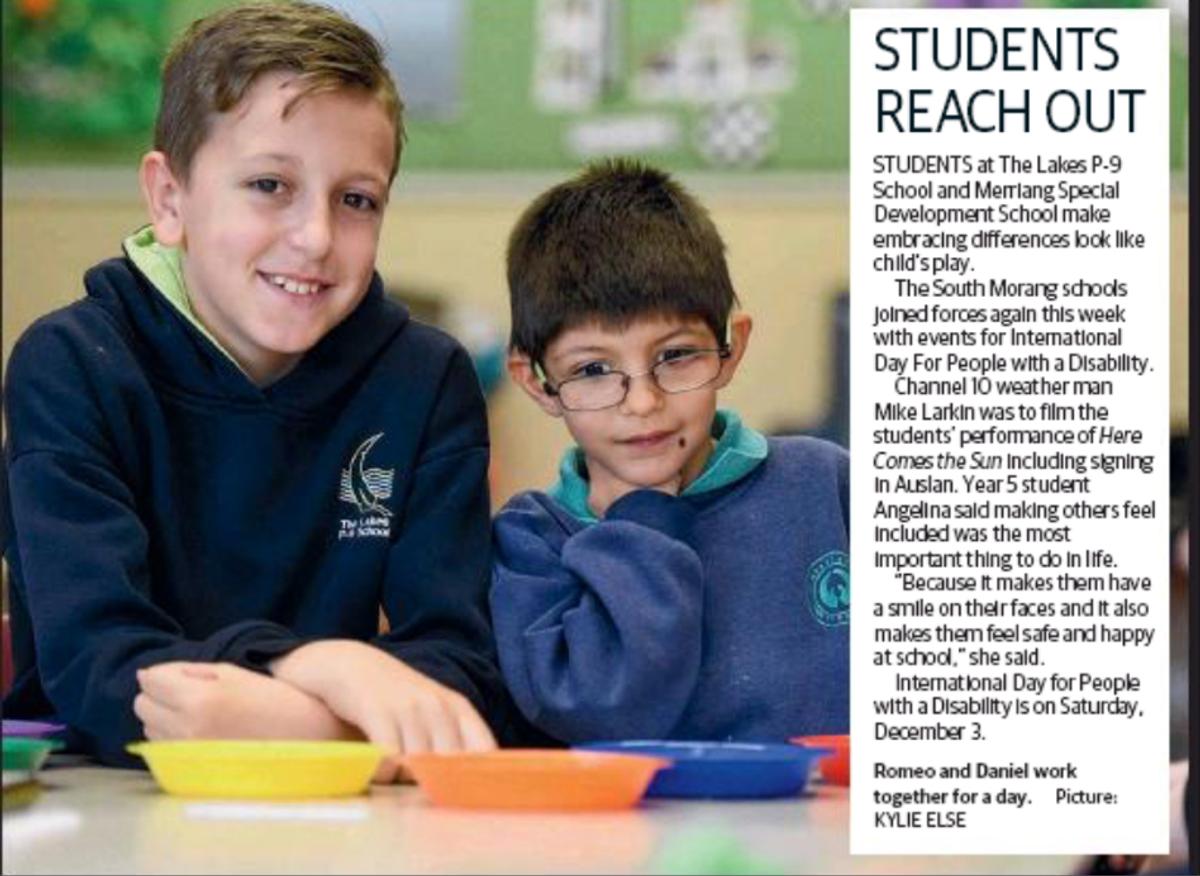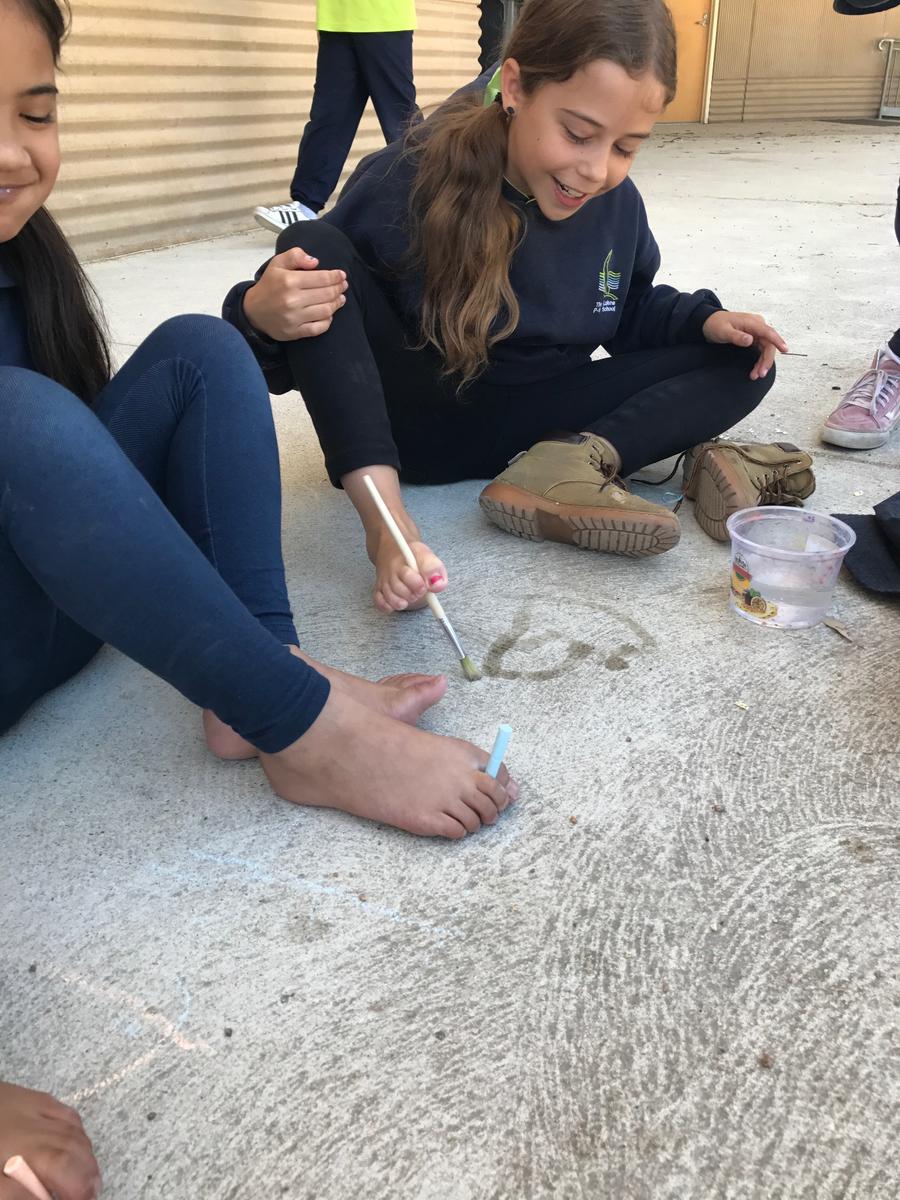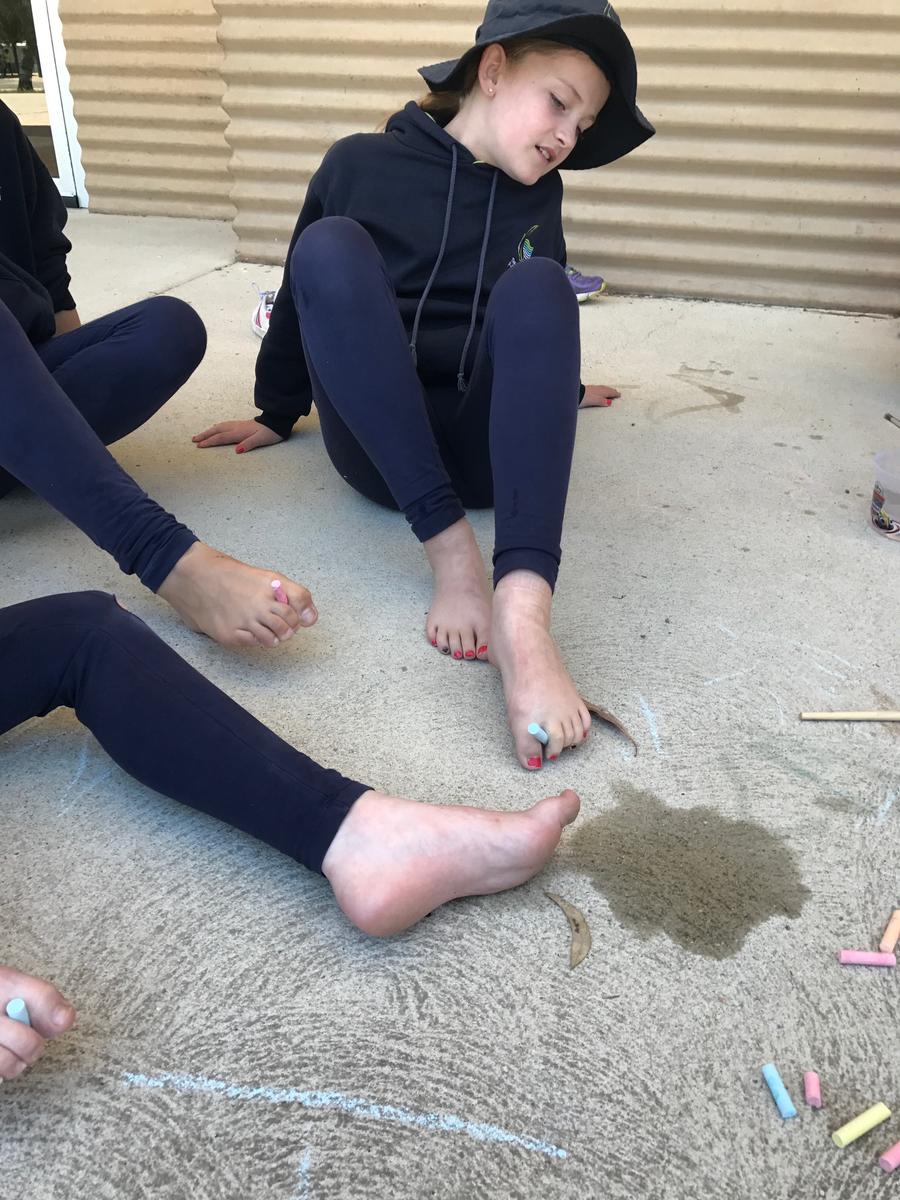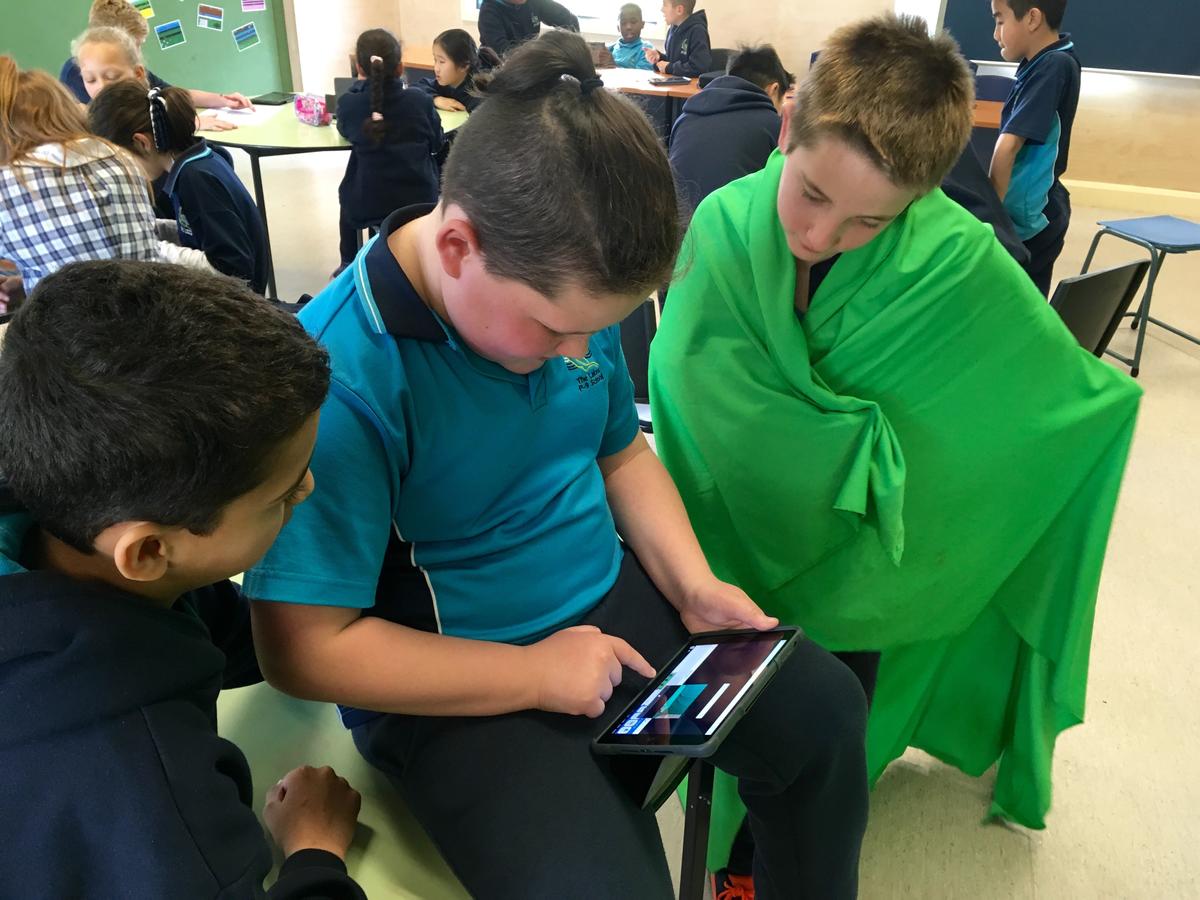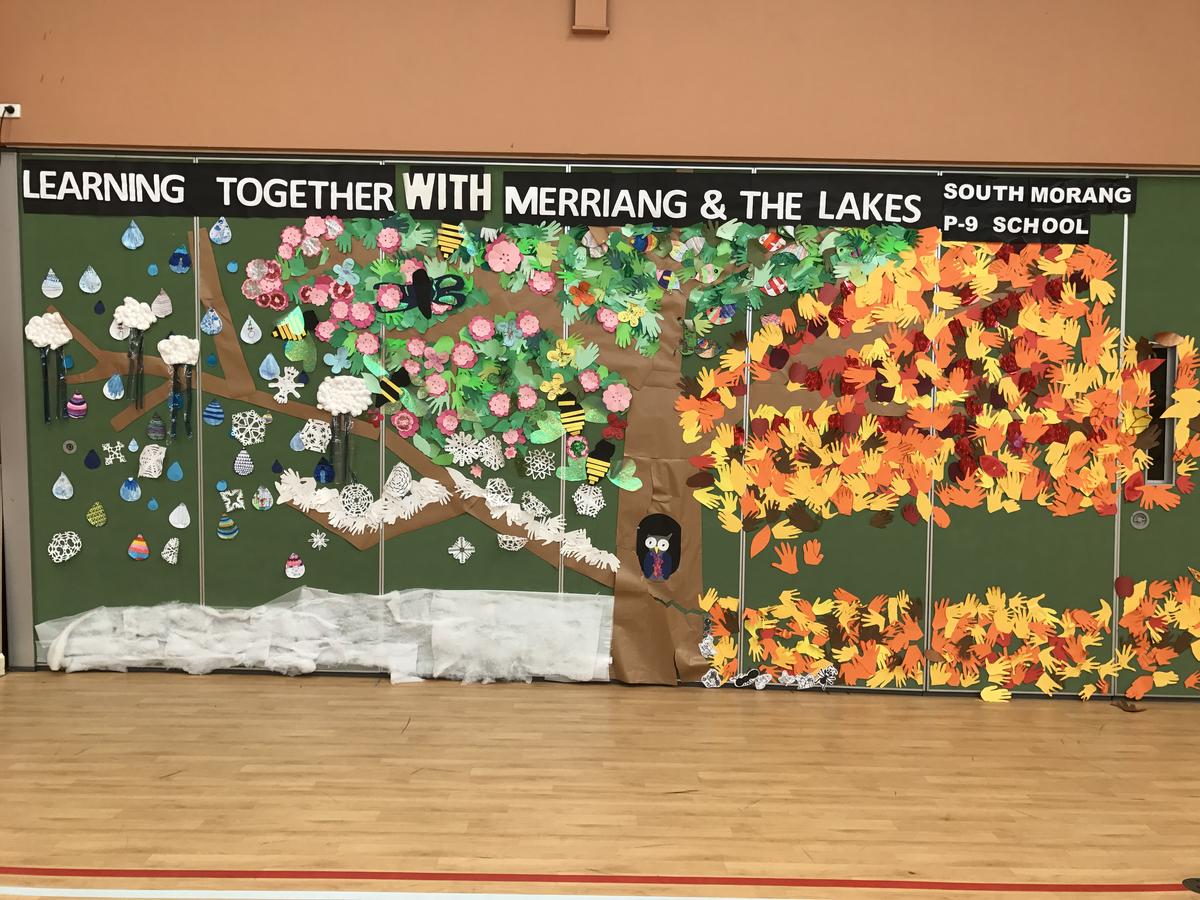Inclusion at The Lakes
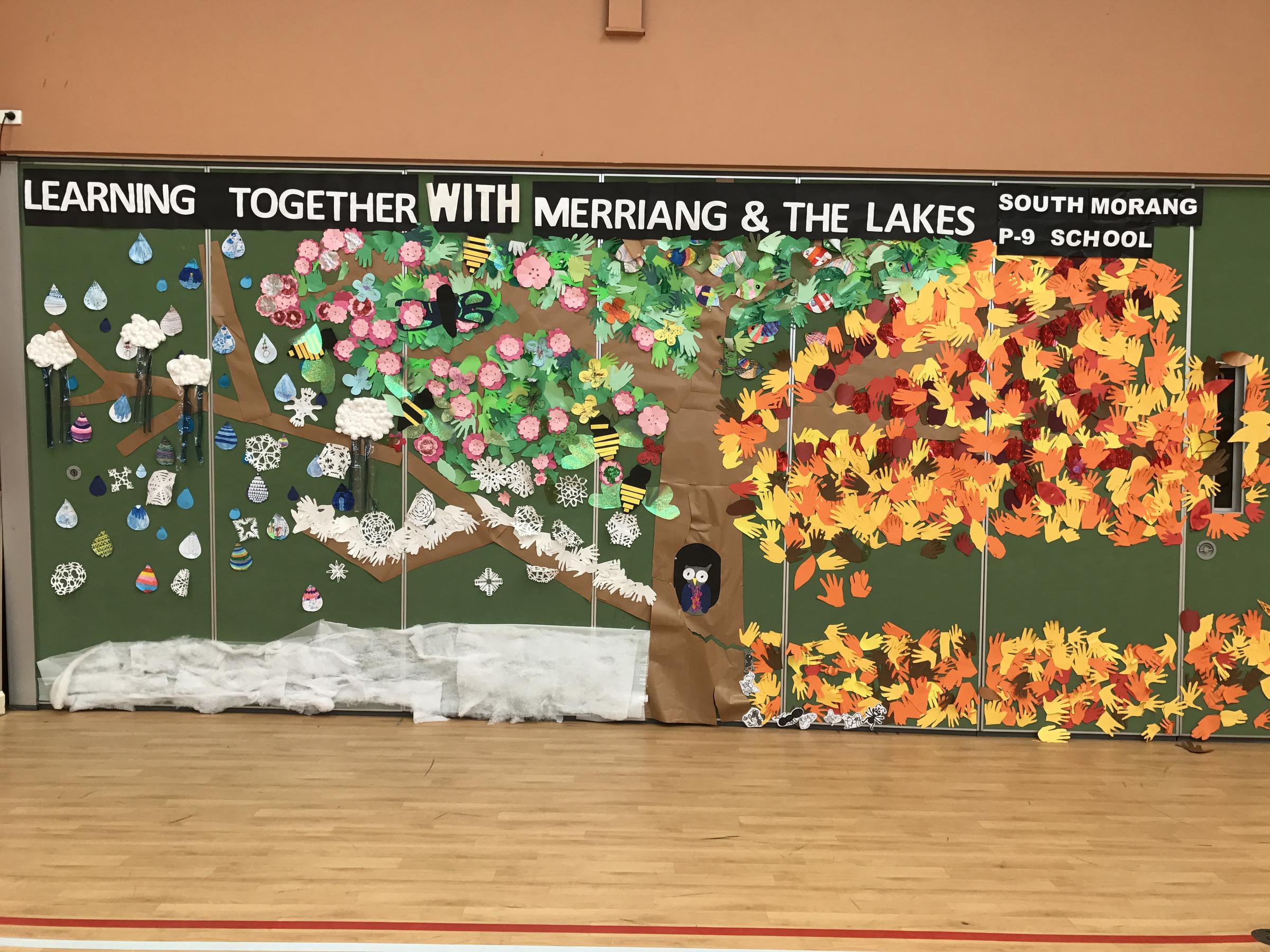
Film Project with Merriang SDS
In Term 3, the Year 5/6 Media Arts elective group started working with students from Merriang SDS to create a film for their End of Year Performance. We had to learn how to use the green screen app on the iPads to make the video. There were different scenes in the film and we had to find backgrounds from the Olympics and the students’ home countries.
When the Merriang students came to The Lakes, we met them outside and showed them to our classroom. We introduced ourselves and filmed some scenes in front of the green screen. The scenes we filmed needed some props, including a soccer ball, drums and flags. The Merriang students were dressed in soccer jerseys and their traditional costumes. We even got to try a costume on! For the end of the movie, we cut out the letters from the students’ names and used stop motion on the iPads to make the credits.
On 8th December 2016, we went to Plenty Ranges to watch the Merriang students perform. We saw the video that we made on the big screen at the back of the stage. We felt very proud and excited to see our video. We thought the Merriang students did really well in their performance.
During this project, we learned that it doesn’t matter if people have disabilities or if they can’t do everything we can do. We can still be friends and have fun together.
Ethan M – Year 5 & Josh T – Year 6
Integration with Merriang SDS Preps
For the last two terms me, Michael, Romeo and Sheruni have been working at the SDS. We have been walking and playing with them. I really enjoyed the Sensory Room.
Cassie M – Year 4
Auslan
Auslan, the language of the Australian Deaf Community, is the Language Other Than English (LOTE) that The Lakes South Morang P-9 School is implementing as part of its curriculum.
It is unique to Australia and does not have a written form. It is a visual and spatial language that has its own grammar and syntax and uses other linguistic elements not found in spoken languages. It is very different to English which is an auditory, verbal and written language. Auslan vocabulary and grammar are greatly dependent on the context of the topic.
Auslan was not invented by any single person, hearing or deaf. Any language, whether spoken or signed, grows and develops spontaneously in response to the communication needs of its users, particularly when it is used by an entire community and in communication between parents and children.
The essentials of Auslan are:
- Specific hand shapes, body language and facial expression;
- Direction, location, movement and orientation of hands to deliver meaning;
- Fingerspelling is used in conjunction with Auslan to manually spell out words that have no equivalent sign, or to spell out the names of places or people. Fingerspelling is also used for emphasis or to clarify a word.
The program is structured to include a section of suggested vocabulary signs linked to each term unit included in the year level’s Scope and Sequence Planner. Teachers plan for the signs they would like to incorporate into their daily program, allowing the teams to develop a culture of authentic communication with both verbal and signed speech.
A set of games and activities is included for each year level to support the introduction and continual practise of the signs and will be extended as more ideas are created and utilised. The program is continually reviewed and modified. Signing can take place any time of the day and in any way appropriate.
Auslan aims to develop the knowledge, understanding and skills to ensure students:
- communicate in Auslan;
- understand language, culture and learning and their relationship, and thereby develop an intercultural capability in communication;
- understand themselves as communicators;,
- develop a knowledge and an understanding of the diversity of Deaf experience and the nature of identity.

